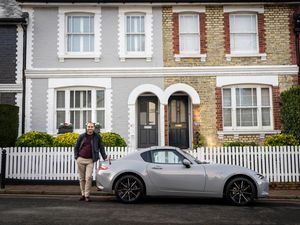Skoda's no joke - and now celebrating 50 years of a classic
The Škoda 1000 MB is now 50 years old. The compact car made its debut on March 21, as the successor to the former Škoda Octavia.

As the first Škoda with rear wheel drive, a rear engine and unibody construction, the 1000 MB is a milestone in the nearly 119-year history of the marque.
In its heyday, the four-door model was one of the best vehicles in the one-litre class and set new standards in terms of comfort, performance and technology.
A completely new plant, a radically new vehicle design, the most advanced engine in its class at that time – the Škoda 1000 MB was a revolution for the company in the spring of 1964.
"Škoda is one of the longest-established vehicle manufacturers in the world," says CEO Winfried Vahland. "The basis for the company's success is outstanding vehicles. The Škoda 1000 MB was a key milestone for the company in the 1960s and an impressive testament to the great engineering skills of Czech automotive engineering."
Having the courage for this fundamentally new course paid off: The 1000 MB was a bestseller in Czechoslovakia and abroad – sustainably strengthening Škoda's position in the European automotive industry and shaping the Czech manufacturer's model strategy until the late 1980s.
Around 443,000 1000 MBs were produced between April 1964 and August 1969, of which more than half were exported even as far as New Zealand and Australia.
The Škoda 1000 MB is one of the most popular classics of the Czech brand nowadays. MB stands for Mladá Boleslav, the location of the Škoda brand's headquarters; the number 1000 for the displacement of the one-litre engine.
The 1000 MB was offered in many versions: in addition to the basic version, from 1966 there were versions with increased performance, and the elegant two-door 1000 MBX – a particularly popular model among collectors today.
To construct the new model, Škoda built a completely new plant in Mladá Boleslav in close proximity to the existing factory buildings in the early 60s. The new facilities included the most modern equipment housed in a total of more than 40 production halls and other buildings.
Thirteen kilometres of new roads were built in total, in addition to 10 kilometres of railway tracks being re-laid and a new switch yard was built on the 80-acre site. The new plant also had its own smelting plant.
The Škoda 1000 MB was one of the most advanced vehicles of its time, engineers opted for a completely new vehicle concept with a rear engine, rear-wheel drive, independent suspension and unibody construction.
At the same time, the Škoda 1000MB set standards in terms of innovative engines and drive technology. In developing the engine, Škoda was the first European car manufacturer to utilise aluminium die-casting in engine block production.
The four-speed gearbox case was also produced using this construction method.
Modern engine technology in conjunction with the low weight of only 755kg ensured tremendously economical fuel consumption. The top speed was 120 km/h. In 1968, the engine power was increased to 32 kW (43 PS).
Prior to the start of series production, the manufacturer subjected the 1000 MB to extensive endurance tests. A total of 50 test vehicles covered 1.6 million kilometres in 1962. These included drives at extreme sub-zero temperatures in Russia as well as heat and dust drives on Caucasus mountain roads.
In addition to its modern technology, the Škoda 1000 MB signalled significant progress in terms of the brand's design. The classic three-box design was typical of the 1960s. The sweeping lines and gentle curves, and the circular headlamps elegantly set into the fenders, the originally-shaped taillights, the panoramic rear window and the curved air intakes were among the distinctive identifying features of the new model.
With its compact dimensions (4.17m long, 1.62m wide and 1.39m high), the 1000 MB offered space and comfort for the whole family.





